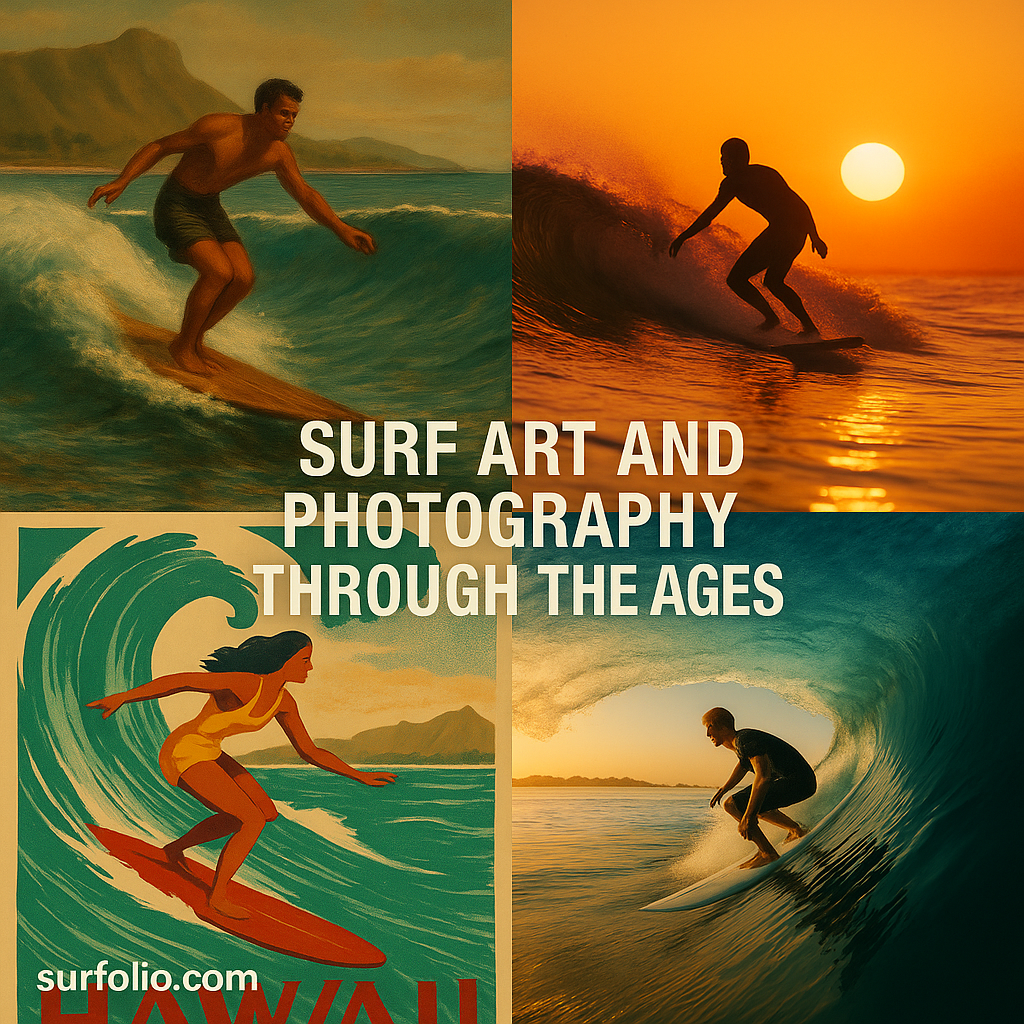
Surfing isn’t just a sport—it’s an art form. For centuries, artists and photographers have tried to capture the power, freedom, and beauty of the ocean through their lenses and brushes. The evolution of surf art and photography tells the story of how surfing has grown from a cultural tradition into a global movement that inspires creativity worldwide.
The Early Days: Hawaiian Roots and Romanticism
Surf art began with the ocean itself. In ancient Hawaii, surfing was both spiritual and ceremonial. Early depictions of surfers appeared in carvings and illustrations by explorers during the 1700s and 1800s, showing the deep bond between people and waves. These images romanticized surfing as something exotic, mysterious, and deeply human—a theme that still resonates today.
By the early 1900s, artists like Duke Kahanamoku helped bring surfing into the global spotlight. Painters and illustrators portrayed the Hawaiian beaches as idyllic escapes, fueling the early fascination with surf culture.
The 1950s–1970s: Surf Culture Goes Pop
The postwar era ignited a new wave of surf-inspired creativity. As surfing spread across California and Australia, art and photography captured a youth-driven culture full of energy and rebellion.
Magazines like Surfer and Surfing World showcased iconic images of longboarders, vintage boards, and endless summers. Artists such as John Severson, founder of Surfer Magazine, blended bold line art with photography to create an instantly recognizable surf aesthetic.
The 1960s and ’70s surf art often featured psychedelic colors, dreamlike waves, and fantasy surf scenes—mirroring the counterculture and freedom that defined the time.
The 1980s–2000s: Modernism and Photography Innovation
As surfing evolved, so did the tools to capture it. Underwater cameras, fisheye lenses, and film advances brought audiences closer to the action than ever before. Photographers like Jeff Divine and Art Brewer immortalized the pioneers of the shortboard revolution, while painters such as Drew Brophy turned surfboards into vibrant canvases of expression.
Digital photography in the 1990s and 2000s allowed surf imagery to explode globally. Surf art became more diverse, blending fine art, graffiti, and street culture with traditional ocean scenes.
Today: A Blend of Tradition and Technology
Today’s surf artists and photographers blend digital design, drone photography, and even AI-inspired visuals to push creative boundaries. Yet the essence remains the same—capturing humanity’s relationship with the sea.
Modern photographers like Chris Burkard highlight the raw beauty of cold-water surf adventures, while artists revisit vintage surf poster styles with modern minimalism. Surf art now spans from gallery walls to murals, NFTs, and digital prints—but its heart is still the timeless pull of the wave.
Why Surf Art Matters
Surf art and photography remind us that surfing isn’t just about performance—it’s about connection, emotion, and storytelling. Through every brushstroke or captured moment, the ocean becomes both muse and metaphor for freedom.
- It preserves surf culture across generations.
- It connects artists and surfers through shared emotion.
- It inspires new perspectives on nature and creativity.
Final Thoughts
Surf art and photography have come a long way—from ancient carvings to digital masterpieces. They’re a reflection of surfing’s soul: ever-changing, deeply human, and forever inspired by the rhythm of the ocean. Whether you’re holding a camera, painting a lineup, or simply gazing at waves, you’re part of that creative lineage.
